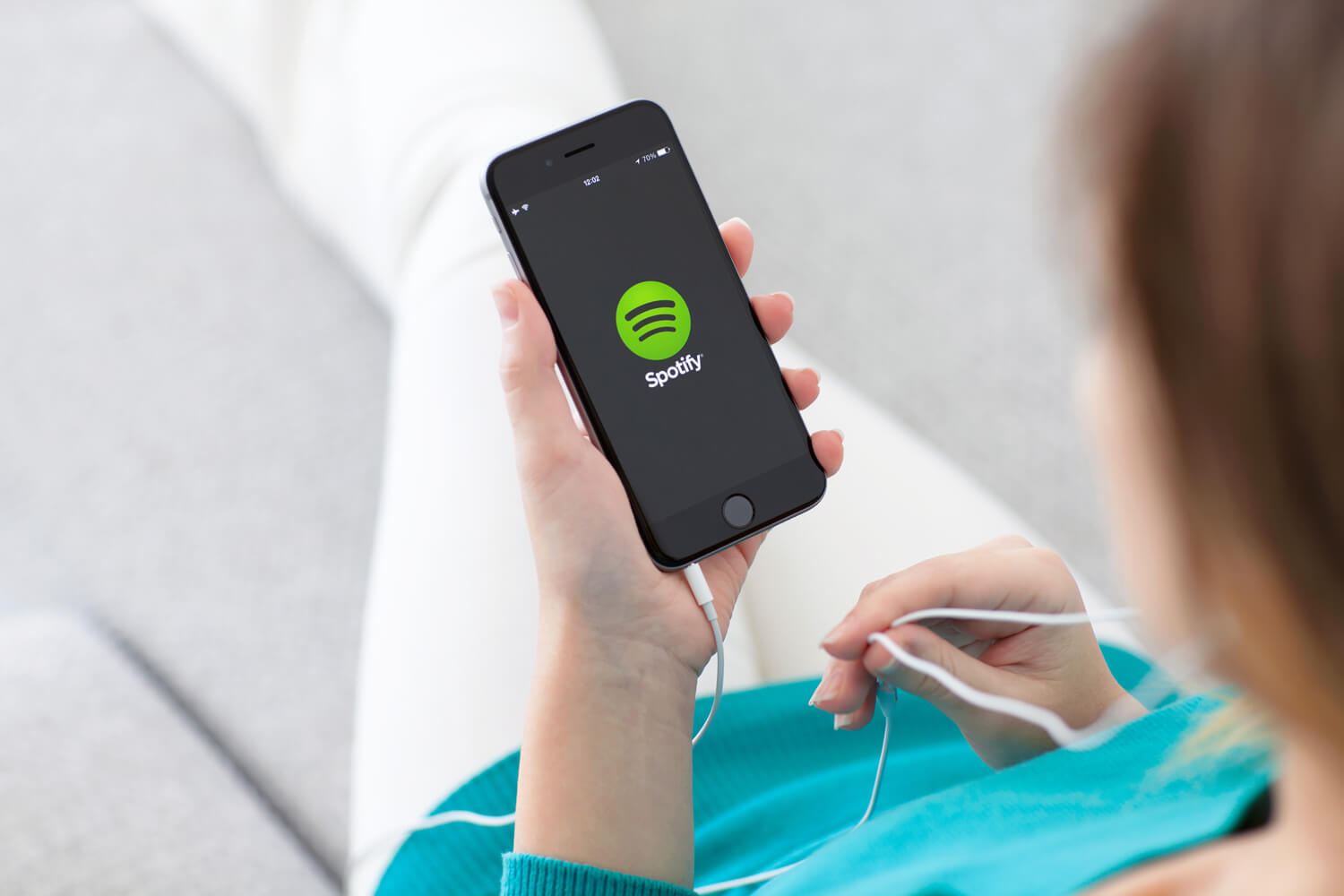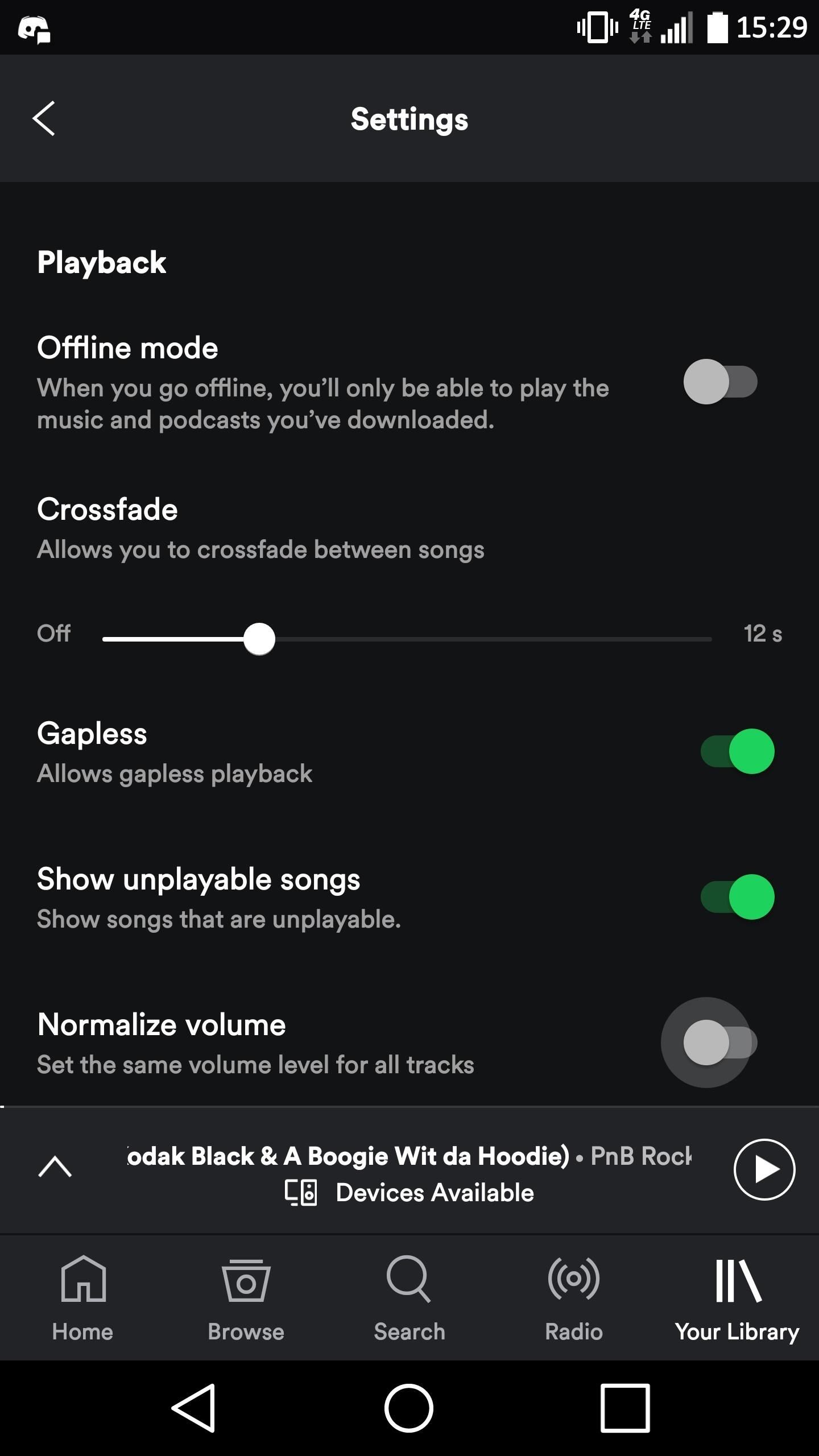
Mastering is the final stage of audio enhancement and key to the listener experience. Read this blog post for a deep dive on the subject.
Looking for a mastering engineer? Connect with professionals on SoundBetter, the world’s leading music production talent marketplace — now part of the Spotify for Artists family.
You can deliver your audio files to us in either FLAC or WAVE format, but we highly recommend using FLAC as it's much easier for us to work with.
I want to use Spotify and a running speed tracker app at the same time, but Spotify is much louder than the other app and so I cannot hear it when both running simultaneously. Is there a way I can turn the volume down on one app but not the other, similar to volume mixer in Windows? I listen to Spotify on various computers and my mobile smartphone using the app on each device. I noticed that on one computer at work, the volume of the adds was a lot louder than the music. I started looking for a solution as the noise level from the adds was seriously annoying in an office environment.
When we receive your audio files, we apply the following processes:
- Check they aren’t corrupt and that their format and container is known.
- Convert to WAV 44.1 kHz (keeping bit depth).
- Transcode the file into the following delivery formats for the quality options available to listeners:
- Calculate the loudness using ReplayGain.
Files are also encrypted before they’re delivered to the platform, but this doesn’t affect the resulting files.

Not always. This is because Spotify applies Loudness Normalization to your tracks as they’re played to listeners.
Mastering tips for Spotify
- Target the loudness level of your master at -14 dB integrated LUFS and keep it below -1 dB TP (True Peak) max. This is best for the lossy formats we use (Ogg/Vorbis and AAC) and will ensure no extra distortion is introduced in the transcoding process.
- If your master is louder than -14 dB integrated LUFS, make sure it stays below -2 dB TP (True Peak) max to avoid extra distortion. This is because louder tracks are more susceptible to extra distortion in the transcoding process.
We currently use ReplayGain, which was the most recognized standard for calculating loudness when Spotify first started.
In the future, we plan to use a new standard for calculating loudness, called ITU 1770 (from the International Telecommunication Union). This defines the integrated LUFS (Loudness Units Full Scale) measure, and it’s what we recommend you use to measure the loudness of your tracks.
ReplayGain doesn’t specify a measurement unit for loudness, so we’re unable to give an exact measure in LUFS used by ITTU 1770. However, we adjust tracks to 3 dB higher than ReplayGain algorithm specifies, which is roughly equivalent to -14 dB LUFS, according to the ITU 1770 standard.
Audio files are delivered to Spotify from distributors all over the world and are often mixed/mastered at different volume levels. We want to ensure the best listening experience for users, so we apply Loudness Normalization to create a balance.
It also levels the playing field between soft and loud masters. Louder tracks have often been cited as sounding better to listeners, so Loudness Normalization removes any unfair advantage.
Note: The web player and Spotify apps integrated into third-party devices (such as speakers and TVs) don’t currently use Loudness Normalization.
Spotify Louder Than Other Apps Together
How does Spotify adjust loudness?
When we receive your audio file, we transcode it to delivery formats Ogg/Vorbis and AAC. At the same time, we calculate the loudness level and store that information as metadata in the transcoded formats of your track.
Playback levels are not adjusted when transcoding tracks. Tracks are delivered to the app with their original volume levels, and positive/negative gain compensation is only applied to a track while it’s playing. This gives users the option to adjust the Loudness Normalization if they want to.
- Negative gain is applied to louder masters so the loudness level is at ca - 14 dB LUFS. This process only decreases the volume in comparison to the master; no additional distortion occurs.
- Positive gain is applied to softer masters so that the loudness level is at ca - 14 dB LUFS. A limiter is also applied, set to engage at -1 dB (sample values), with a 5 ms attack time and a 100 ms decay time. This will prevent any distortion or clipping from soft but dynamic tracks.
The gain is constant throughout the whole track, and calculated to match our desired output loudness level.
Premium users can choose between the following volume normalization levels in their app settings:
- Loud - equalling ca -11 dB LUFS (+6 dB gain multiplied to ReplayGain)
- Normal (default) - equalling ca -14 dB LUFS (+3 dB gain multiplied to ReplayGain)
- Quiet - equalling ca - 23 dB LUFS (-5 dB gain multiplied to ReplayGain)
This is to compensate for where playback isn’t loud enough (e.g. in a noisy environment) or dynamic enough (e.g. in a quiet environment).
Tip: Check out all the audio settings available to listeners, both free and Premium.
Nope!
When a user plays your album, we normalize the loudness level of that album at the same time. The entire album will play back at -14 dB LUFS from start to finish, and the gain compensation applied by Spotify won’t change between tracks. This means the softer tracks will be just as soft as you intend them to be.
However, if the user plays your album in shuffle, or a track from it in between tracks from other albums (such as in a playlist), we can’t apply album normalization so track level adjustments are used instead.
The loudness of your music depends on how Loudness Normalization relates to your master.
Here are a few reasons why your music may sound different than others:
- A track that is very dynamic but mastered to -14 dB LUFS will have its peak levels preserved when played on Spotify. If you compare that to a loudly mastered track, at - 6 dB LUFS for example, its peaks get lowered to - 8 dB LUFS. The two tracks will play back at the same perceived loudness level, but the loud or “peak” parts of the more dynamic track will be much louder.
- If you’re playing your album in shuffle, or in between tracks from other albums (such as in a playlist), track normalization is used. For more info about this, see My album is deliberately mastered to have some tracks softer than others. Will this get lost on Spotify?
- You have inaudible high-frequency content in your mix. Loudness algorithms (both ReplayGain and ITU 1770) do not have a lowpass cut-off filter, meaning any high-frequency content will add up to the energy measured by the algorithms and your track will be measured as louder by the algorithms than is actually perceived.
- You have a really loud master (true peaks well above -2 dB) which makes the encoding add some distortion, adding to the overall energy of the track. That’s the energy as perceived by the algorithm, which might be inaudible to you but adds to the loudness from the algorithm’s perspective.
- You’re not listening to a linear playback system. The ReplayGain algorithm (just like the ITU 1770 algorithm) can’t guess what audio playback system you’re using, so can’t compensate for non-linearity in your system. Meaning, tracks that have more energy in the frequencies your system lifts up will sound much louder on your system.
- As we’re still using the ReplayGain algorithm, you may encounter differences between that and the ITU 1770 algorithm, meaning what you expect from measuring your track with a loudness meter (we recommend ITU 1770) is not exactly what we measure for your track using ReplayGain.
When I play music through the music app on my SE it is significantly quieter than other music apps such as Soundcloud or Spotify and was wondering why this is? I don't have any hearing loss (I regularly get tested as part of my job) but I find myself listening on the highest volume possible and even that's not enough sometimes.
I can confirm that this problem is NOT to do with ANY of the following;
EQ (although some EQs are louder than others)
Sound check
Volume limit
My headphones
I need to know why the Apple music app is so quiet in comparison and if there is going to be a fix for it. I downloaded Equalizer+ and the volume was much better but I can't stand the way the app is laid out (plus the adverts).
Spotify Louder Than Other Apps Compatible
Any help or clarification out there?
Spotify Louder Than Other Apps App
Posted on